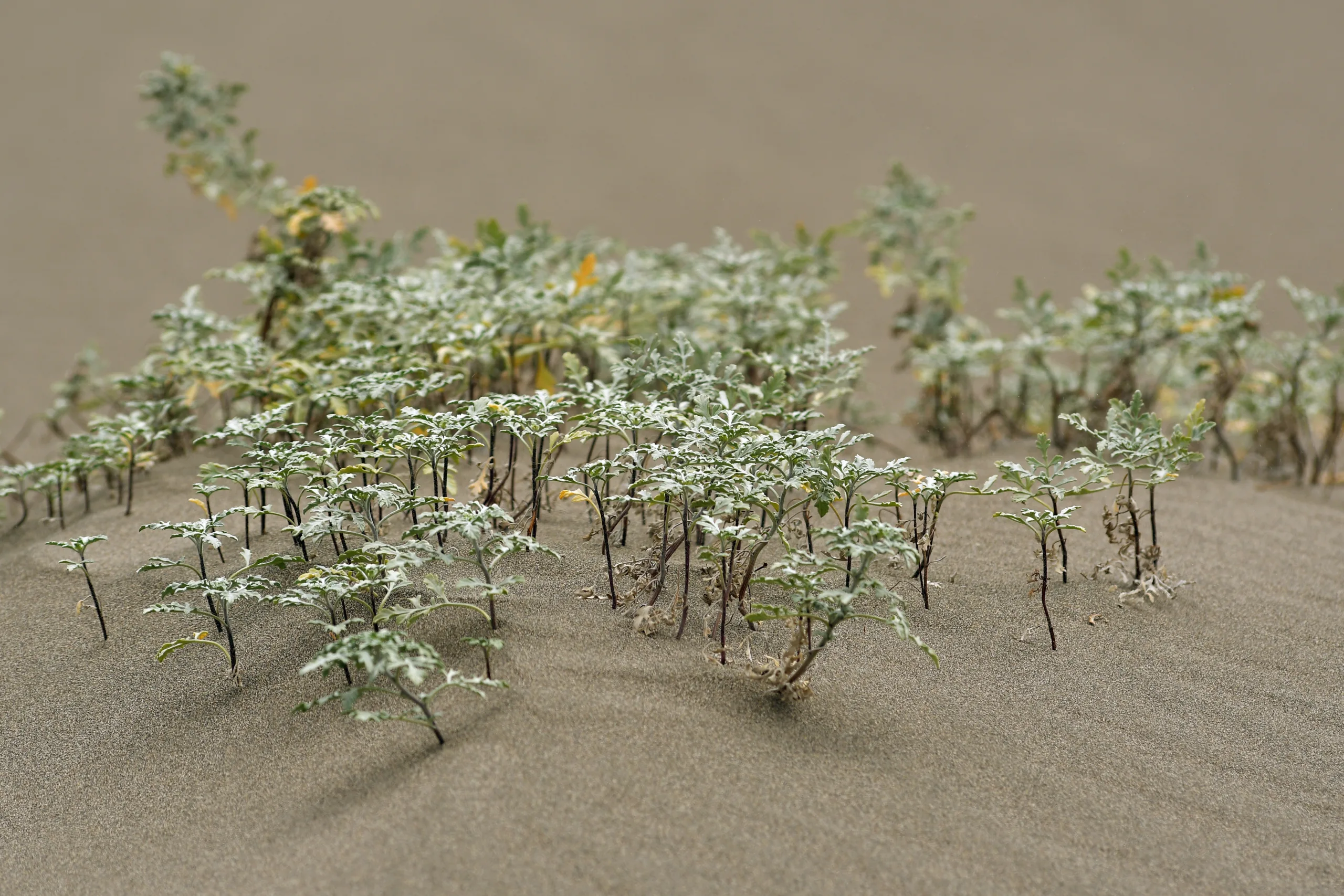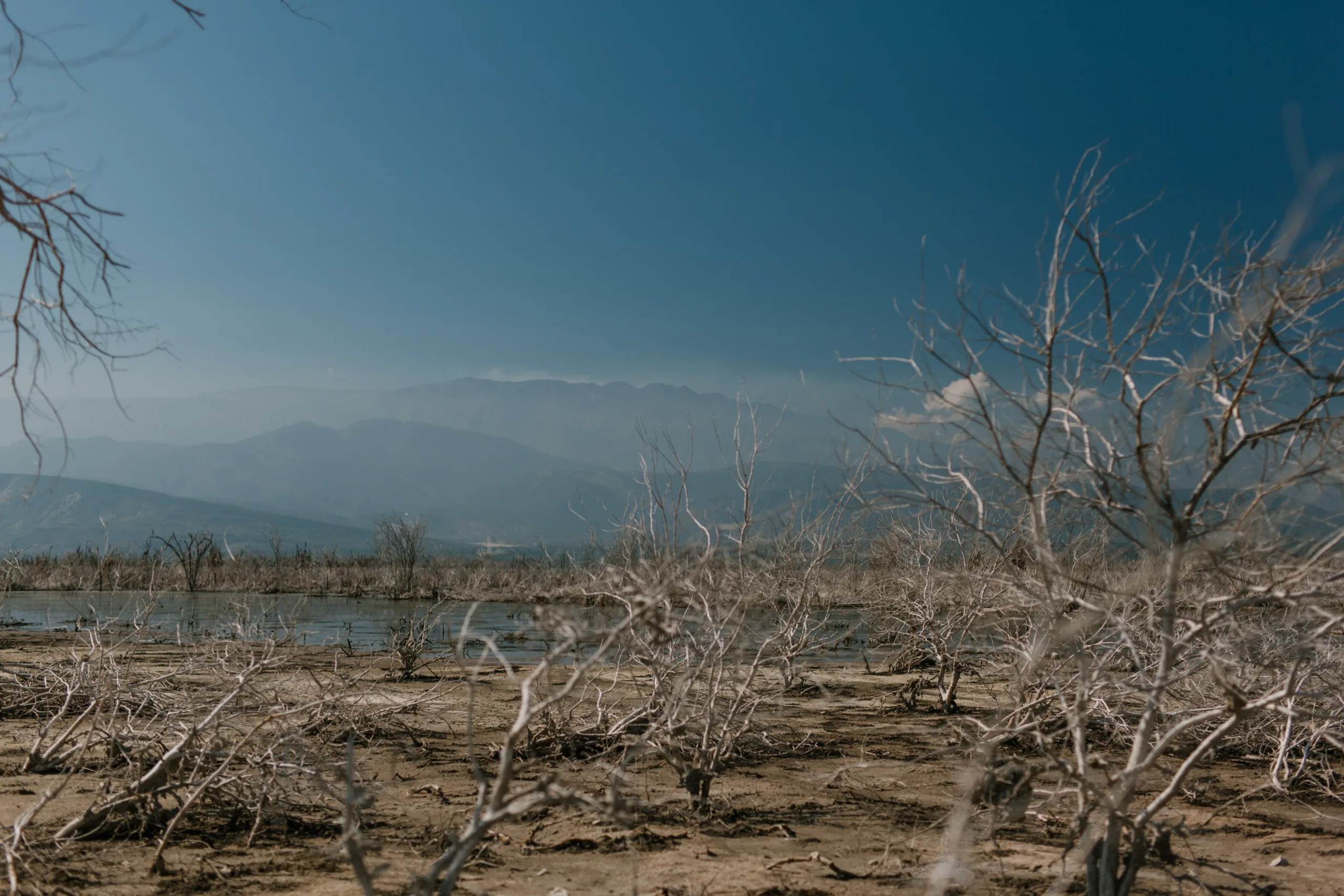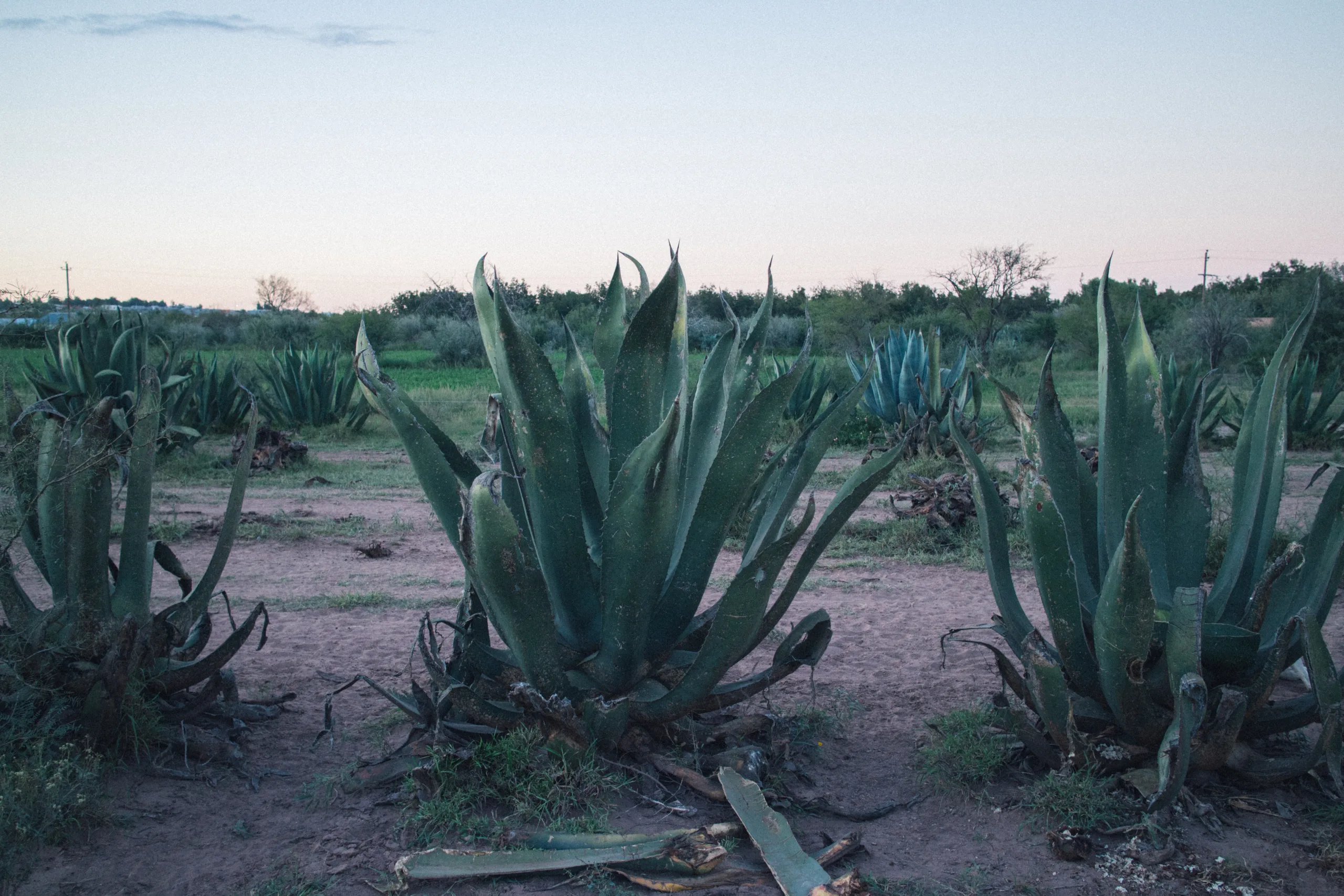Are you looking for tips on how to grow trees in a desert environment? Deserts are usually considered barren and lifeless, but with the right knowledge, anyone can make the desert green again. Growing trees in deserts is not only possible, but it can also help improve the environment by providing shade and oxygen, while also reducing soil erosion. In this article, we will discuss the basics of growing trees in deserts, including what types of trees to plant, how to prepare the soil, and how to maintain them. With the help of these tips, you can help make a positive impact on your desert landscape.Growing trees in a desert environment can be a challenging task, but it is possible. To ensure successful growth, it is important to select the right species of trees that are adapted to the desert environment and have deep root systems. Appropriate soil preparation, irrigation methods, and protection from harsh weather conditions are essential for successful tree growth in a desert climate. Additionally, it is important to provide adequate nutrients and mulch to the soil to help retain moisture and encourage tree growth. With proper care and maintenance, growing trees in a desert can be rewarding for years to come.
Types Of Trees Suitable For Desert Climate
Trees play an important role in sustaining the environment, and in a desert climate, those roles are even more essential. Trees help to maintain the balance of nature by preventing soil erosion, providing shade, and helping to reduce air pollution. In desert climates, it is important to choose trees that are especially suited for this type of environment.
Some of the best trees to plant in a desert climate include the mesquite tree, palo verde tree, creosote bush, and Joshua tree. The mesquite tree is native to arid areas and can survive extreme temperatures. It is also drought-tolerant and can live up to 200 years. The palo verde tree has a greenish-gray trunk that is able to store water for long periods of time. This makes it an excellent choice for use in desert climates as it can survive without supplemental watering once established.
The creosote bush is also well suited for a desert climate as it can survive with minimal water and high temperatures. This shrub produces yellow flowers in the spring and provides valuable habitat for wildlife. The Joshua Tree is another great option for deserts as it is well adapted with its drought-tolerant root system and thick bark that helps protect it from extreme heat and cold temperatures. Additionally, its leaves provide food for birds and other animals.
Overall, there are many different types of trees that are suitable for deserts climates due to their ability to thrive with very little water or supplemental irrigation once established. These trees provide valuable benefits to their environment by helping prevent soil erosion, creating shade, reducing air pollution, and providing habitat for wildlife species.
Essential Requirements For Growing Trees In Desert
Growing trees in a desert environment is challenging due to the extreme heat, lack of rainfall and windy conditions. However, by understanding the essential requirements for growing trees in a desert climate, it is possible to create a successful tree-growing environment.
The most important factor when growing trees in the desert is understanding the soil type. Different types of soil will require different care and attention. For example, sandy soils can become dry quickly and require frequent watering, while clay soils can hold water for longer periods but need to be aerated regularly. A soil test should be done before planting to determine what kind of soil you are dealing with.
Watering is another key factor for successful tree growth in a desert climate. Trees will need an adequate amount of water to survive, especially when temperatures are high. It’s important to monitor your tree’s water needs and adjust them accordingly, as too much or too little water can cause damage to your trees’ roots.
Choosing the right species of tree is also important when growing in a desert environment. Some species are better suited for hot weather than others, so it is important to research what type of tree would be best suited for your area before planting. Desert-native species such as mesquite and cottonwood are often good choices since they are adapted to arid climates and require less maintenance than other trees.
Finally, it’s important to protect your trees from strong winds by providing them with adequate shelter or windbreaks such as walls or fences that can deflect wind away from your trees. Additionally, using mulch around the base of your trees can help retain moisture in the soil and keep roots cool during hot days.
By following these essential requirements for growing trees in a desert environment, you can ensure that your trees get the care they need and thrive despite harsh climatic conditions.
Growing Trees in Deserts
Growing trees in deserts is a difficult task due to the extreme climatic conditions of desert regions. The primary challenge is the lack of adequate water, as the arid conditions of deserts limit the amount of rainfall and humidity. This makes it difficult to sustain tree growth, particularly during hot summer months when temperatures can reach up to 50 degrees Celsius. In addition, soils in desert regions are often nutrient-poor and unable to support healthy growth. Furthermore, strong winds and sand storms are also common in deserts, which can damage tree roots and make them vulnerable to drought.
Adaptability
In order to successfully grow trees in deserts, it is important to select species that have adapted well to the harsh conditions. These include species such as date palms, olive trees, acacias and tamarisks which are all drought resistant. Additionally, native species are often best suited for growing in desert climates as they have already adapted to the local environment.
Irrigation
In order for trees to survive in desert regions, it is essential that irrigation systems are employed for regular watering. This can be done using a variety of methods including drip irrigation or using an underground tank with a pump which delivers water directly to plants’ roots. It is also important that these systems are properly managed and maintained so that water use is optimized without wasting resources or damaging vegetation.
Mulching
Mulching is another important technique for helping trees grow in desert environments. It helps conserve moisture by reducing evaporation from soil surface and preventing weeds from competing with tree roots for nutrients and water resources. Mulch also protects tree roots from strong winds and reduces soil erosion caused by sand storms.
Shade
Providing shade for trees growing in desert climates is an effective way of protecting them from extreme temperatures during hot summer months. This can be done by planting shrubs around trees or by erecting structures such as shade cloths over them which will act as a barrier against direct sunlight while still allowing air circulation through their leaves.
Soil Conditions Required To Grow Trees In Desert
Trees are an important part of any ecosystem, and in desert areas they provide shade, food and shelter for animals. Growing trees in the desert requires careful consideration of soil conditions to ensure they thrive. The soil in the desert is mainly composed of rock and sand, making it difficult for plants to take root. It takes a combination of good drainage, adequate nutrients and regular watering to encourage growth.
The first step in creating the right soil conditions for trees is to improve drainage. Desert soils tend to be dense and can easily become waterlogged, leading to root rot and other issues. Adding organic matter such as compost or peat moss will help break up the soil structure and improve drainage.
Next, ensure adequate nutrients are available for tree growth by adding fertilizer or compost. A slow-release fertilizer that contains nitrogen, phosphorus and potassium is ideal for desert soils as it will provide a gradual release of nutrients over time. Compost can also be added to boost nutrient levels as well as improve drainage and water retention.
Finally, regular watering is essential for trees in the desert. Desert soils tend to be dry so water should be applied regularly during periods of low rainfall or drought. Trees should be watered deeply but infrequently – about once a week – to encourage deep root growth and prevent shallow roots from drying out quickly.
By taking the time to create the right soil conditions for trees in the desert, you can help ensure they survive and thrive in this harsh environment. With a little effort you can create an oasis in even the driest deserts!

Choose The Right Tree
The first step to growing trees in a desert is to choose the right tree. Look for species that are native to the area and are adapted to the arid conditions. These types of trees usually have deep root systems that can access groundwater, as well as foliage that conserves water and can survive in high temperatures. Some of the best trees for growing in a desert include mesquite, acacia, palo verde, ironwood, and catclaw.
Provide Plenty of Sunlight
Deserts are known for their intense sunlight and heat, so make sure your tree gets plenty of it. Position it in an area with full sun exposure and keep it away from shade-producing structures such as buildings or walls. In addition, try to avoid planting too close to other trees or plants that might block out some of the sunlight.
Mulch The Soil
Mulch is an important part of growing trees in a desert because it helps keep moisture in the soil and prevents weeds from taking over. Spread a layer of mulch around your tree about two inches thick and replenish it when necessary. Make sure the mulch isn’t touching the trunk of your tree as this can lead to rot or disease.
Water Deeply And Infrequently
When watering your tree, make sure you do it deeply but infrequently. This will help encourage deeper root growth which will lead to better water absorption and drought tolerance down the road. When you do water, use a hose or bucket so you can be sure the roots are getting enough water without wasting any on runoff or evaporation.
Fertilize Regularly
Fertilizing is important for any type of plant but especially in a desert where nutrients can be scarce. Choose an organic fertilizer specifically formulated for desert soils and apply according to package instructions at least once every month during growing season (spring through fall). This will help promote strong growth and healthy foliage throughout the year.
Finally, don’t forget about regular pruning! Pruning helps keep your tree healthy by removing dead or diseased branches as well as promoting better air circulation which helps prevent pests and diseases from taking hold. Make sure you wear gloves when pruning as some desert plants have thorns that can be quite sharp!
Advantages Of Growing Trees In Desert
Growing trees in the desert has numerous benefits, both for the environment and for the people living in that area. Trees provide shade, reduce air temperatures, improve air quality, protect against soil erosion and sandstorms, act as windbreaks, increase water infiltration and provide food and habitat for wildlife. Trees also provide economic benefits such as job opportunities, firewood production and improved agricultural production.
Shade is an important benefit of trees in desert areas. Trees provide refuge from the sun by cooling the ground surface by up to 9°F (5°C). This cooling effect can be noticed up to fifty meters away from the tree canopy. Shade protects livestock from heat stress, which increases their productivity. Shade also protects humans from sunburns and other skin diseases caused by overexposure to the sun.
Trees also reduce air temperatures in desert areas by blocking solar radiation and releasing moisture into the atmosphere through transpiration. This creates a cooler microclimate around them that can help improve human comfort levels during hot summer days. Trees absorb sound waves which reduce noise pollution around them. They also act as windbreaks which reduce wind speed, improving air quality and reducing dust storms.
In addition to providing shelter from the heat and wind, trees act as natural barriers against soil erosion in deserts. Their deep roots help stabilize the soil while their leaves break down organic matter that helps to revitalize depleted soils. The shade of trees also encourages more water infiltration into soils which helps them retain moisture longer thus improving agricultural production.
Finally, trees are important for providing food and habitat for a variety of wildlife species found in deserts such as birds, mammals, reptiles and insects. They offer shelter for these animals during extreme weather conditions such as sandstorms or extreme temperatures.
In conclusion, growing trees in desert areas has numerous advantages both for people living there as well as for wildlife species inhabiting those areas. Trees provide shade which helps protect people from sunburns and skin diseases while also cooling down air temperatures; they reduce noise pollution; they act as natural barriers against wind speed; they improve water infiltration into soils; they help revitalize depleted soils; they provide food and habitat for wildlife species; and finally they offer economic benefits such as job opportunities or firewood production.
Growing Trees In Desert: Best Practices To Follow
Growing trees in desert climates can be a difficult task. Deserts tend to have extremely hot temperatures during the day and cool temperatures at night, making it difficult for trees to survive. Fortunately, there are a few best practices to follow when growing trees in desert climates. Here are some tips to get started:
1. Choose the Right Tree – Not all trees will survive in a desert climate, so it’s important to choose the right tree for your location. Look for trees that are native to the region and that can tolerate extreme temperatures and lack of water.
2. Plant in the Right Location – It’s important to choose the right location for planting your tree. Look for an area that gets plenty of sunlight but is also protected from strong winds and excessive heat. The location should also be close to a water source and have good drainage so that excess water doesn’t pool around the tree’s root system.
3. Provide Adequate Watering – Trees grown in desert climates will need regular watering, especially during dry spells or during periods of extreme heat. Make sure to give your tree enough water so that its roots stay moist but not soggy; otherwise, the roots will rot or become susceptible to diseases and pests.
4. Prune Properly – Pruning is an important part of keeping your tree healthy in a desert climate; this includes removing dead or diseased branches as well as cutting away any branches or leaves that are blocking sunlight from reaching other parts of the tree. When pruning, make sure not to remove too much foliage as this can cause stress on the tree and lead to further problems down the line.
5. Fertilize Regularly – Fertilizing is essential for providing your tree with additional nutrients that may be lacking in its environment. Make sure to use fertilizers specifically designed for desert climates; otherwise, you may end up feeding your tree too much nitrogen which can result in poor growth or burn its leaves with too much salt content from fertilizers not designed for deserts.
By following these best practices, you can ensure that your trees thrive even under harsh desert conditions!

Conclusion
Growing trees in desert can be a difficult task, but with the right knowledge and resources, it can be done. It is important to choose the right species of tree, identify the best soil and water sources, and properly maintain the trees through regular pruning and fertilizing. Planting in areas with high wind can also help protect plants from sandstorms.
Additionally, utilizing an irrigation system such as a drip system and mulching around the tree can help retain moisture in the soil and protect against weeds. It is also helpful to use a shade cloth or wind break to protect against extreme heat and winds. Finally, it is important to monitor trees for signs of pests or disease and treat accordingly.
By following these suggestions, it is possible to successfully grow trees in a desert environment. With the proper planning and maintenance, these trees can provide shade, habitat for wildlife, windbreaks for farms, and even food for people living in arid environments.
In conclusion, growing trees in a desert requires knowledge of local conditions, careful selection of species suited for those conditions as well as patience when tending to them throughout their lifecycle. With proper care and attention however these obstacles are surmountable allowing us to enjoy their beauty while they enrich our lives both aesthetically and ecologically.

My interest in trees started when I first saw the giant sequoias in Yosemite.
I was a teenager then, and I remember thinking, “I need to learn more about this.”
That moment stuck with me.
A few years later, I went on to study forestry at Michigan Tech.
Since graduating, I’ve worked in a mix of hands-on tree care and community education.
I’ve spent over ten years helping people understand how to plant, maintain, and protect the trees in their neighborhoods.
I don’t see trees as just part of the landscape.
They are living things that make a real difference in our daily lives.
